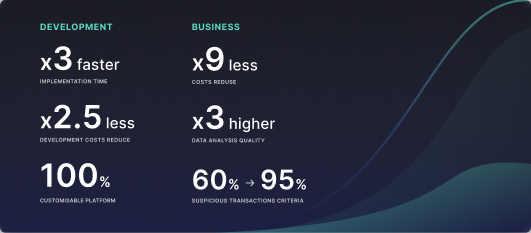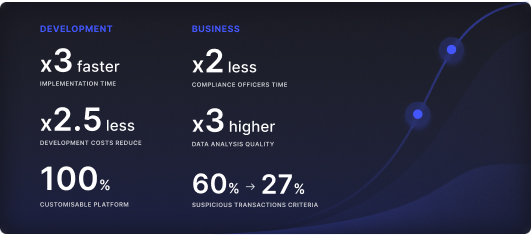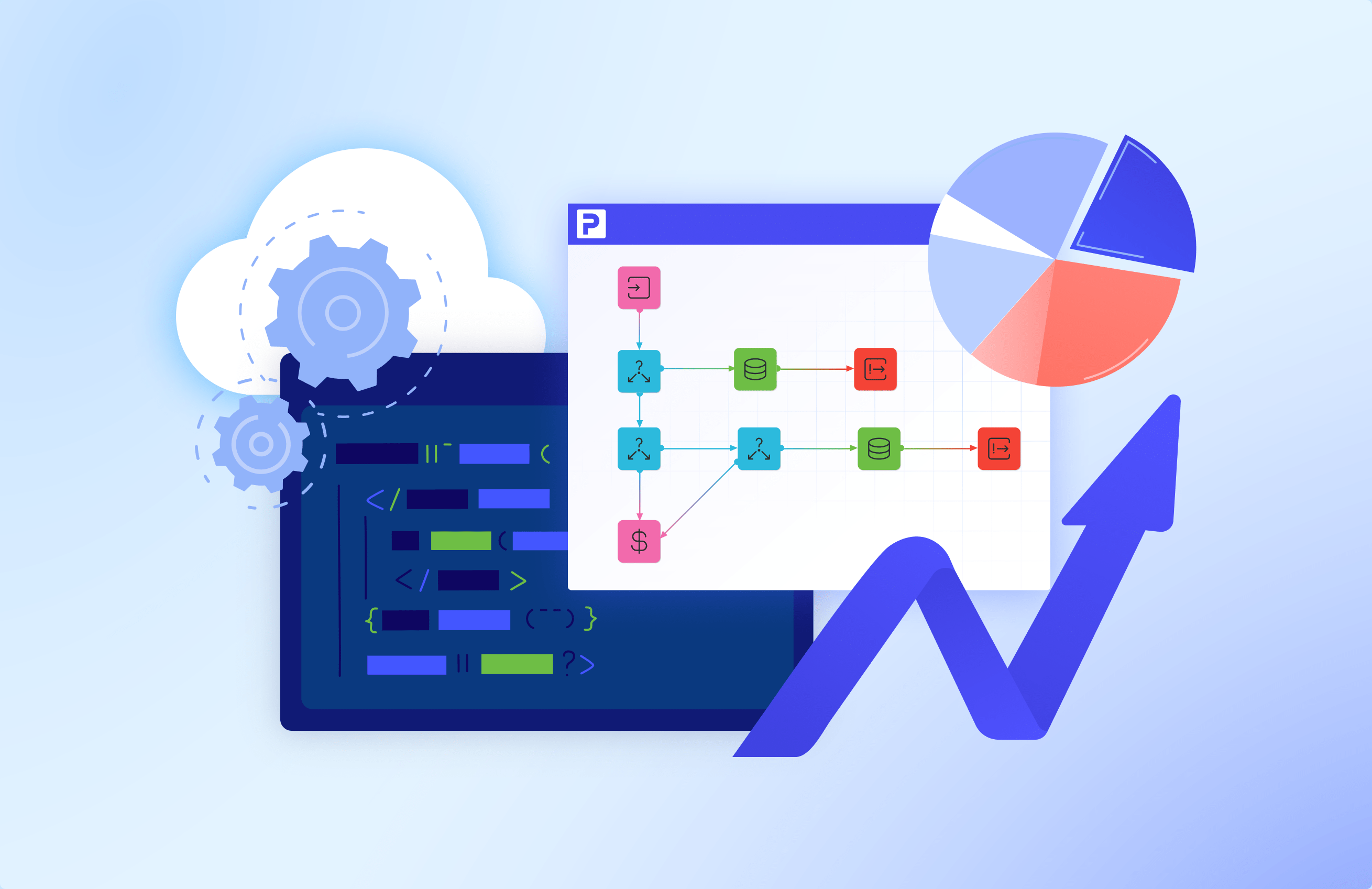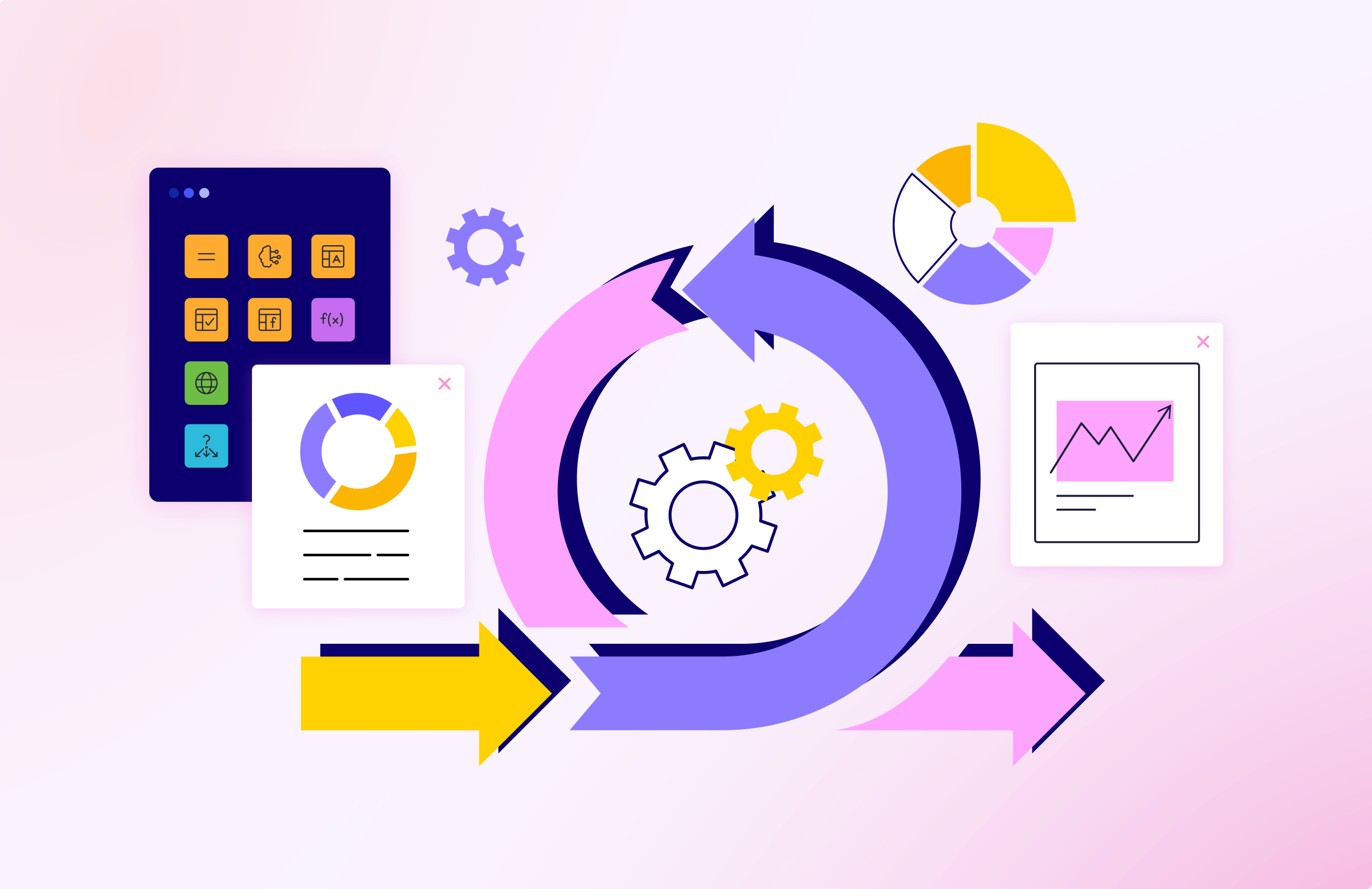Will Chat GPT make low-code obsolete?


Over the past decade, the software development paradigm has shifted massively.A plethora of new and effective programming languages, technologies, and development tools appeared on the scene. Now, even a non-tech-savvy person can build apps in hours without writing a line of code. And it’s all made possible with low-code or no-code platforms.
But what about — having an AI creating your app in hours automatically? Before 2023, it was an absurd notion. Today, it seems that ChatGPT generative AI will make it a reality.
The technology caused quite a stir around the world. Professionals in multiple spheres started to worry about the relevance of their skills in the face of ‘all- mighty’ AIs. This time, concerns came from, developers and low-code service providers. At the same time, business owners and IT managers asked themselves: should we hire professional developers or keep leveraging low-code development platforms?
The answer is not as obvious as you may expect. Although AI is a powerful tool, in its current state, the code generation capabilities of ChatGPT are far from ideal. In this article, you’ll learn more about the reasons why low-code platforms are still essential software development tools despite ChatGPT’s promising features.
What are ChatGPT and low-code?
First off, let’s take a look at what ChatGPT and low-code platforms offer at the moment.
What is ChatGPT?
ChatGPT is an AI-driven natural language processing tool by OpenAI that can interact with users through chat conversations. The AI tool can perform various tasks like writing emails, essays, and code in different programming languages following the user’s tasks. At the moment, ChatGPT is in the research phase and offers its services for free.
However, since February 2023 you can use ChatGPT Plus, a paid subscription version, for $20 per month. The paid version offers brand-new features, priority access, and faster response times.
What are low-code platforms?
Low code is the visual approach to software development that allows citizen and professional developers to build apps faster. Using low-code platforms, developers and non-technical users can create apps from pre-made code components, expressed as graphic components and code for custom functionalities if needed. Depending on the type of platform, they allow the development of back-end or front-end for apps.

The platforms facilitate the software delivery lifecycle with embedded testing/debugging tools, pre-built integrations with DBs or 3r’d party services and instant deployment options. Additionally, most low-code platforms employ AI technology to assist developers during the development process and empower the low-code applications themselves.
Downsides of Chat GPT for software development
For now, the technology doesn’t embody the futuristic view of an “all-mighty” generative AI. For instance, two weeks after the ChatGPT release, StackOverflow used GPT for Q&A and temporarily banned it due to the excessive errors in the answers the product provided. The company stated that the incorrect information harmed their website and the users who tried to get the information they needed.
Current code generation quality doesn’t do any better. Meanwhile, сoding is a more complex process than content creation. Here are the downsides of ChatGPT programming capabilities that users frequently report:
Difficulties with task formulation
Most Chat GPT users fail to formulate their needs in a way AI would understand correctly. The right formulation of the task becomes a challenge that demands at least some understanding of the software development process. With ChatGPT, users need to communicate exactly what type of code parts they need in a consecutive and precise manner.
Users need to name the programming language, app purposes, and other relevant software elements they need code for. The lack of precision in the task leads to wrong code and then improper, functioning. Ultimately, ChatGPT users may need to recode an app all over again several times before they get the right outcome.
Professional developers are necessary
Chat GPT generates code at lightning speed compared to traditional or custom low-code development. But still, you’ll need professional developers to validate and test the ChatGPT code before putting it to work. In most cases, the code has several bugs that developers fix, putting a lot of effort (it’s easier for developers to check their own code).

Sometimes, developers have to change the source code from the mom
Then, Chat GPT generates code in clusters rather than big chunks. Again, you cannot do this without a pro developer who can unite these parts into a comprehensive app logic.
Training data dependence
ChatGPT code accuracy and reliability strongly depend on the model training data. For example, if the model is trained with outdated data, ChatGPT will produce code that may not comply with the new security policies.
Lack of context-awareness
At the moment, the ChatGPT code generation model fails to process the tasks in a comprehensive manner. It means that ChatGPT doesn’t take into account all the requirements a user has for the app. Because of this, ChatGPT’s apps are not suitable for all industry-specific cases.
Limited Creativity
ChatGPT generates syntactically correct code but has no power to find creative solutions or give away revolutionary ideas. All the ChatGPT code is created based on the existing software development patterns and practices. So, the model doesn’t fit the needs of businesses with unique requirements.
Low-code vs. Chat GPT: Why low-code is here to stay.
Now we get to the point of the article. What advantages does the low-code approach have in comparison to Chat GPT for software development? To get the answer in detail, let’s compare ChatGPT with the advantages of the ProcessMIX low-code platform features.
Security and Compliance
Unlike ChatGPT, low-code platform providers are responsible for the quality of the code components and features they offer. Professional developers carefully build the code with the current requirements in mind. Then, as the regulations change, the provider’s team adjusts the pre-build elements. All in all, by developing an app with a low-code platform, users can be assured of the service and security compliance of the app.
Industry-specific solutions
As opposed to ChatGPT’s lack of context awareness, low-code platform developers build the components and functions to serve particular business needs. In fact, the success of a low-code platform on the market is directly tied to how effectively they solve industry-specific tasks. The development of low-code platforms goes under the supervision of business analysts that ensure low-code apps will actually solve business problems.
The room for creativity
Although low-code platforms have tons of pre-made code components, they allow developers to write code for custom components. While ChatGPT strictly follows the model training data, low-code platforms make it possible to create unique code elements for the apps.
For instance, the programming experience on the low-code platform is also enhanced by the IDE (Integrated Development Environment), version control features, and AI assistants. These features facilitate the development process and team collaboration.
Quick testing and deployment
With low-code platforms, there’s no need to double-check and waste days fixing the code. Embedded testing and debugging tools spot the problems and can provide quick solutions right in the low-code platform interface. Unless the low-code app is perfectly fine and functional, the platform won’t pass it to the deployment stage. In contrast to ChatGPT code, you can be assured that the app will function well and avoid problems down the line if any bug remains unchecked.
The deployment on a low-code platform is generally smooth and fast. In the case of ProcessMIX, you can instantly deploy on the AWS cloud as the platform has all the infrastructure ready to be applied. Alternatively, you can use Kubernetes to export the app and deploy it on-premises.
Low-code platforms work with AI too
Despite the fact that low-code platforms don’t build apps by themselves, they greatly speed up the process of working in tandem with AI. Low-code AI assistants suggest the code and are able to spot the vulnerabilities during custom development.
ProcessMIX, like any powerful low-code platform, employs AI to operate with larger app logic clusters due to the narrow-focused model training. It means that low-code AI models are more precise with the business requirement and get constantly updated in response to ever-changing regulations.
Bottom Line
In spite of the hype, current Chat GPT cannot replace low-code platforms in software development competition. ChatGPT works faster, but it takes much time for developers to evaluate and adjust the code to its optimal state.
Here are the major takeaways you should consider if you’re choosing between Chat GPT and a low-code platform:
- ChatGPT produces code faster than anything but it lacks quality and context awareness.; Low-code development works faster than traditional development and allows the building of industry-specific solutions.
- ChatGPT apps take much time to be fixed and prepared for the market.; Low-code platforms allow testing/debugging apps fast and ensure security.
- ChatGPT generates code following the model training data which considers only existing coding patterns and practices.; Low-code platforms consider the ever-changing regulations and create space for app customization;
- ChatGPT needs carefully formulated tasks to produce the solution a business may need.; Low-code platforms provide the ready-made components that are already prepared to solve industry-specific needs.
- Low-code platforms effectively use AI to enhance software development.; ChatGPT relies only on an AI model, which may lead to excessive errors and inconsistencies.
Despite the downsides and criticism, we can expect much from the ChatGPT and other generative AI technologies in the years to come. But for now, low-code development is the more safe, hassle-free, and more reliable way to develop software. Especially when it comes to enterprise-level software development.
 Visual Development
Visual Development Assignment of risk level and customer category within KYC processes at customer onboarding
Assignment of risk level and customer category within KYC processes at customer onboarding Cross-Sell Offer Calculation for the 12M Client Base
Cross-Sell Offer Calculation for the 12M Client Base


